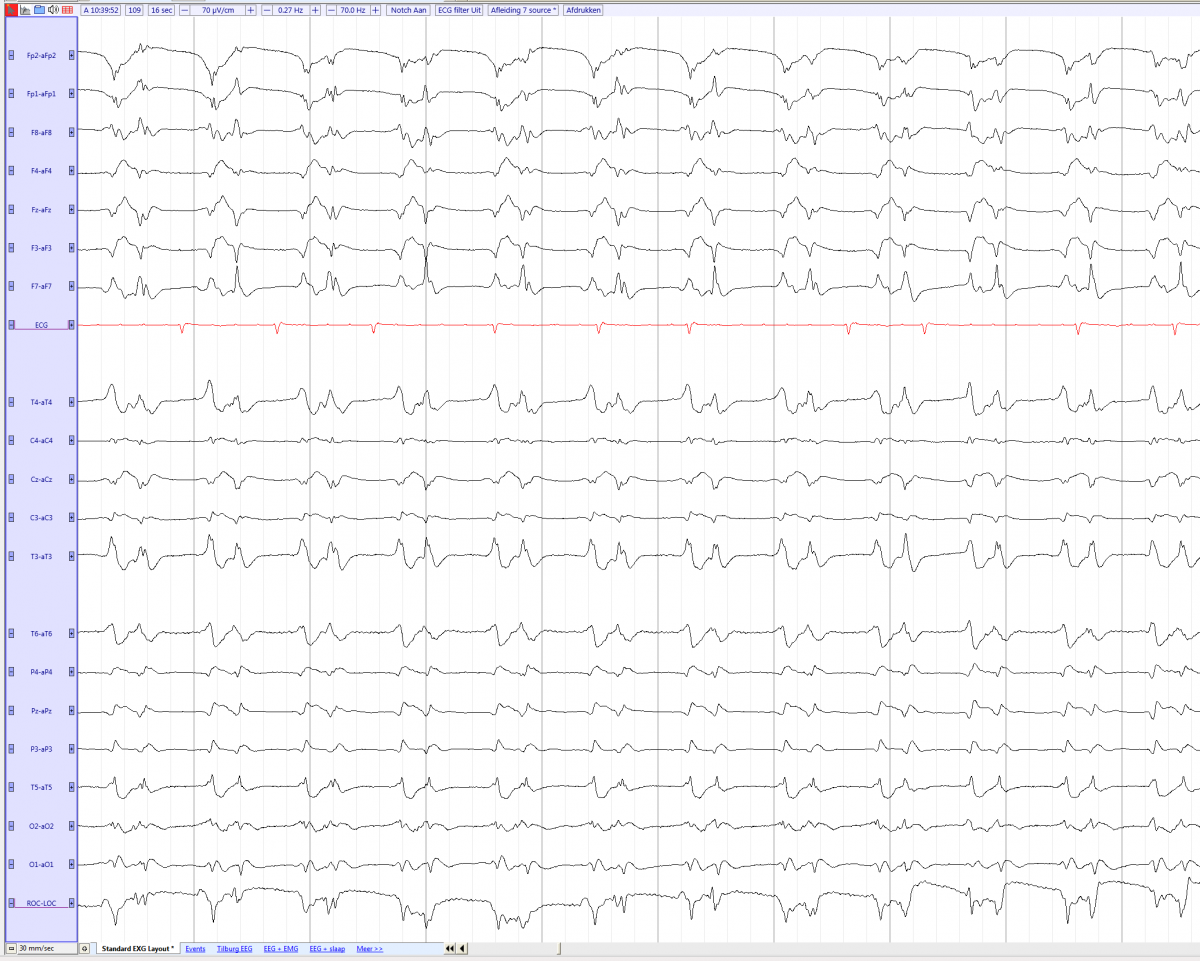Difference between revisions of "GPD (Generalized periodic discharges)"
From EEGpedia
| Line 10: | Line 10: | ||
*Not to be confused with intermittent rhythmic delta activity (IRDA) | *Not to be confused with intermittent rhythmic delta activity (IRDA) | ||
| − | **[[TIRDA (temporal intermittent rhythmic delta activity]] | + | **[[TIRDA (temporal intermittent rhythmic delta activity)]] |
**[[OIRDA (occipital intermittent rhythmic delta activity)]] | **[[OIRDA (occipital intermittent rhythmic delta activity)]] | ||
| − | **[[FIRDA (frontal intermittent rhythmic delta activity]] | + | **[[FIRDA (frontal intermittent rhythmic delta activity)]] |
*Not to be confused with lateralized of bilateral independent periodic discharges: | *Not to be confused with lateralized of bilateral independent periodic discharges: | ||
Latest revision as of 11:23, 3 July 2017
- Any pattern of generalized synchronous, repetitive discharges of similar morphology
- Relative symmetric
- Periodic, so with interdischarge interval recurring at nearly regular intervals.
- A pattern can qualify as periodic as long as it continues for at least 6 cycles
- Frontal- or occipital-dominant.
- If a more ictal appearance it can be categorized as GPD+:[1]
- +F: superimposed fast activity.
- +R: superimposed rhythmic or quasi-rhythmic activity.
- +FR: superimposed fast activity and rhythmic or quasi-rhythmic activity.
- Not to be confused with intermittent rhythmic delta activity (IRDA)
- Not to be confused with lateralized of bilateral independent periodic discharges:
GPD’s in a 85 years old male after a out of hospital cardiac arrest (source), the discharges are symmetric, similar morphology with the same interdischarge intervals

Notes
- ↑ ACNS STANDARDIZED ICU EEG NOMENCLATURE v. 2012